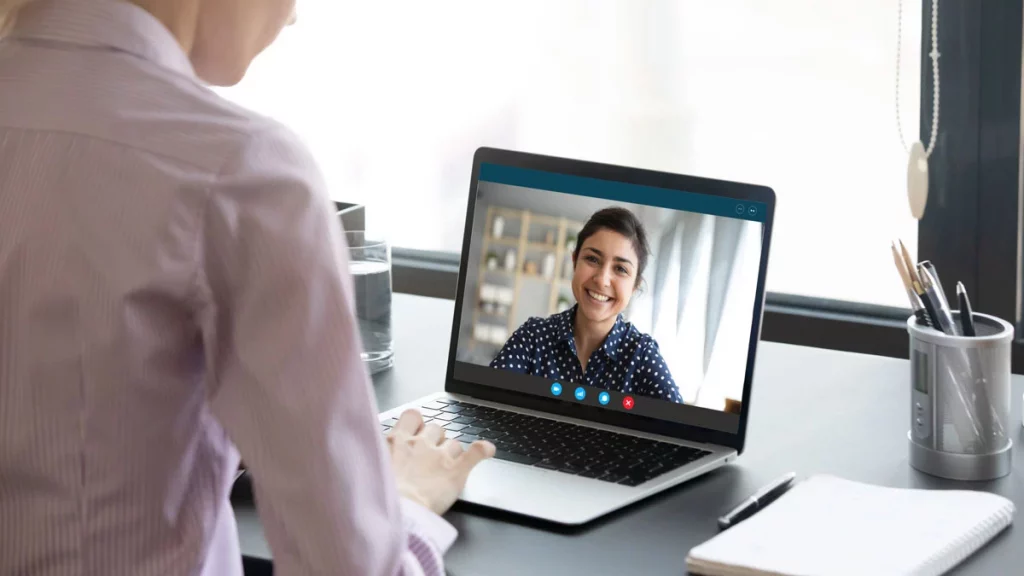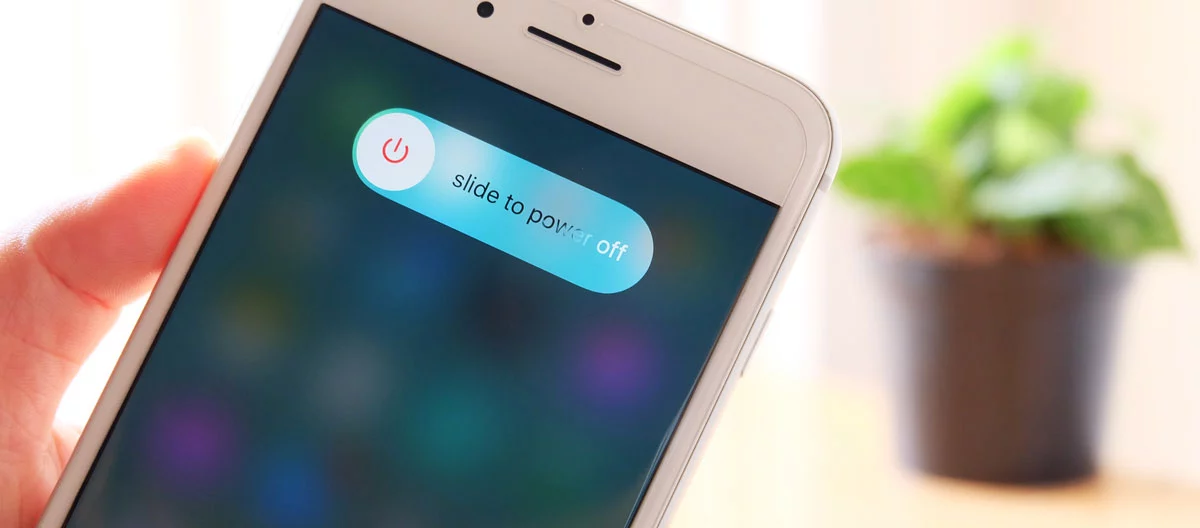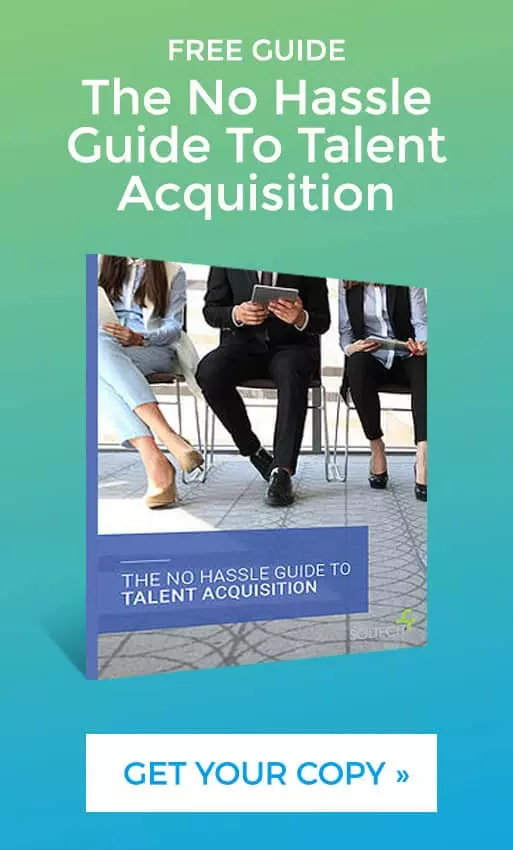
How to Get the Most from Virtual Interviews
By Veanne Smith
Although the Covid-19 pandemic has increased the necessity for virtual interviews, I have been conducting them for quite a while. Oddly enough, the virtual interview process presents unexpected challenges, even though it would seem logical that in-person interviews would be exactly the same.
Virtual interviews can be just as effective as an in-person interview, but there are differences worth noting so you, as the recruiter or hiring professional, can ramp up your style and get the best results from your search.
Traditional vs Virtual Interview Style
In the beginning, I conducted virtual interviews with a more traditional, cut-and-dry style. Since I represented the hiring company, it seemed more important for the candidate to make a stellar impression on me and my colleagues rather than vice versa. Typically, my preparation included reviewing the candidate’s LinkedIn profile and other traces of their online footprint to see what I could discover. It was surprising when a few of the people I hired from the virtual interviews were not at all what I expected.
I learned that the interview practices I had been using needed to be revised and tweaked to become more effective for the virtual format.

It became obvious that a more in-depth review would be a big advantage. So, I began to use the opportunity to get to know more about each candidate personally – how they live, work, and spend their free time. Rehashing information found on their resume or profile was not giving me the total, more complete picture.
After all, an employee brings their total being into the workplace. If they are organized and focused in other parts of their life, it is likely those same traits will show up in their work. Conversely, if they are sloppy and disorganized at home it is axiomatic that those traits will spill over while performing their duties.
Now I use techniques that prompt the candidate to become relaxed enough to present their true selves rather than their “interview persona”.
The Importance of Building Instant Rapport
In an effort to rapidly build rapport and encourage the candidate to open up, I use techniques that build rapport and trust.
For example, I mirror and match the candidate’s energy level, tone, mannerisms, and body language at the onset of the interview. If they sit back in their chair, I do the same. If they speak softly, I follow suit. Mirroring and matching another person’s words, body language, and tonality quickly builds trust, establishes rapport, and makes the other person feel at ease.

Once the person is relaxed and feeling good about the situation, I ask open-ended questions that provide the time to observe and listen. Initially, I am interested in learning:
- If they are prepared. Did they research the company and the specific tech position before the meeting?
- Did they take the time to test their computer’s audio and video before the interview?
- What does their personal space say about them? Are their surroundings organized, sloppy, artsy, innovative, typical, or void of any personality?
- Do they have the space in which to work comfortably from home?
- What does their body language convey? Are they leaning in, sitting back, fidgeting, crossing their arms, or exuding enthusiasm?
- Have they situated their monitor to make sure they are presenting more than just their face? It’s important to look comfortably seated at an appropriate distance from the camera.
- Is there chaos or calm in their space? Are there kids and/or pets running around distracting the candidate?
- How do they handle “the pregnant pause” in the conversation?
A Relaxed Interview Reveals So Much More
I want to make the candidate so comfortable that they unknowingly reveal true insights on what motivates them, how they will behave once they get comfortable in a new job, how they respond to challenges and difficult situations, how aware they are of their interpersonal relationships, and where they are on the intellectual humility scale. This type of exchange can happen when both parties are relaxed enough to become a bit more vulnerable. I make it my mission to ensure the candidate is relaxed and comfortable.
Get Curious. Ask Insightful Questions
The best interviews come from being genuinely interested in getting to know more about the person. I no longer use prepared notes even though I do spend time preparing. Instead, I let my natural curiosity guide the interview by questioning specific discussion points until I feel I have gotten to know them at a deeper level.
If they begin to ramble or go off on a tangent, I use “pattern interrupt” questions that are somewhat atypical, such as: “I notice you have a piano in the room. Do you play?” Or, “Your space is so lush and green. You must have a green thumb.”
This technique will change the topic and help put the candidate more at ease before moving on to answering my more thought-provoking questions.

Active Listening is Key
Insightful information can be gleaned from using a technique called “active listening”, which is to listen with all of your senses and completely focus on what the other person is communicating with their body language, tone, and verbiage. When there is total attentiveness being displayed by the interviewer, the interviewee will open up and provide hints about their manner of working and living, which is key to finding an employee that has the knowledge, skills, and energy level to fit into the workplace environment.
Create Virtual Eye-Contact
I always make eye contact and use hand gestures so the candidate knows I am engaged. This is the tricky part of virtual interviews. When you are listening to the candidate, eye contact means looking at the camera – not at the person’s image. Looking at the person’s image will appear as though you are looking elsewhere – not at the person. I have learned to place the person’s image as close as possible to the location of my monitor’s camera. That will help avoid the possibility of looking distracted and/or disinterested.
Remove All Distractions
Additionally, I want to give the interviewee my full attention, therefore my phone is always turned off and other distractions are removed before the meeting. Many of the virtual meeting software applications, such as Zoom, allow users to replace their real environment with any number of possible backgrounds. Some of my team use different virtual backgrounds, as they can be fun. However, in an interview situation, I stay with my current environment to keep the meeting as real as possible and I expect the candidate to do the same.
Can I Expect Different Results?
These interviewer enhancements have made a tremendous difference in my results. It’s been a learning experience, but I have come to the realization that sticking with past traditional interview protocols does not yield the best results. Since I have stepped up my game to meet the challenges of the virtual interview process, the results have improved exponentially.
We have been able to recruit the types of people who not only have the desired skills, but also the characteristics that work best for technical applications. We look for those who are team players, growth-oriented, who love challenges, and genuinely work hard to help the company for whom they work to grow and prosper.
In Summary
Getting to know applicants holistically results in finding a more perfect match. From now on consider making these virtual interview changes:
- Throw away your notes and get curious about the person.
- Actively listen with all of your senses.
- Do not feel the need to fill dead air. Let the candidate fill the “pregnant pause”.
- Position your candidate’s image as close as possible to your camera to create an eye-to-eye connection.
- Become observant about the candidate’s environment, preparedness, distractions, workspace, and more.
Finding great tech talent is not always the easiest task, as many tech professionals shy away from the interview process. Some would even prefer to accept a job they do not love rather than continue to interview until they find the perfect job. Our downloadable eBook, No Hassle Guide to Talent Acquisition provides excellent tips on how to more easily zero in on the best candidate for the job.
Veanne Smith
CEO & Co-Founder
Veanne Smith serves as the CEO and co-founder of SOLTECH – Atlanta’s premier software development, technology consulting and IT staffing firm.
Prior to founding SOLTECH, Veanne spent more than 10 years in the technology industry, where she leveraged her software development and project management skills to attain executive leadership responsibilities for a growing national technology consulting firm. She is passionate about building mutually beneficial long-term relationships, growing businesses, and helping people achieve their personal life goals via rewarding employment opportunities.
Outside of SOLTECH, Veanne is considered a thought leader in Atlanta’s IT community. Currently, she serves on the Advisory Board for The College of Computing and Software Engineering at Kennesaw State University. In addition, Veanne helped launch the AxIO Advisory Council, has been a member of Vistage for 20 years, and created Atlanta Business Impact Radio – a podcast that showcases some of Atlanta’s most innovative businesses and technology professionals.
As an influential figure in the technology and IT staffing industry, Veanne consistently produces insightful articles that address both the opportunities and challenges in IT staffing. Through her writing, she offers valuable tips and advice to businesses seeking to hire technical talent, as well as individuals searching for new opportunities.
She holds a degree in Computer Science from Illinois State University.






